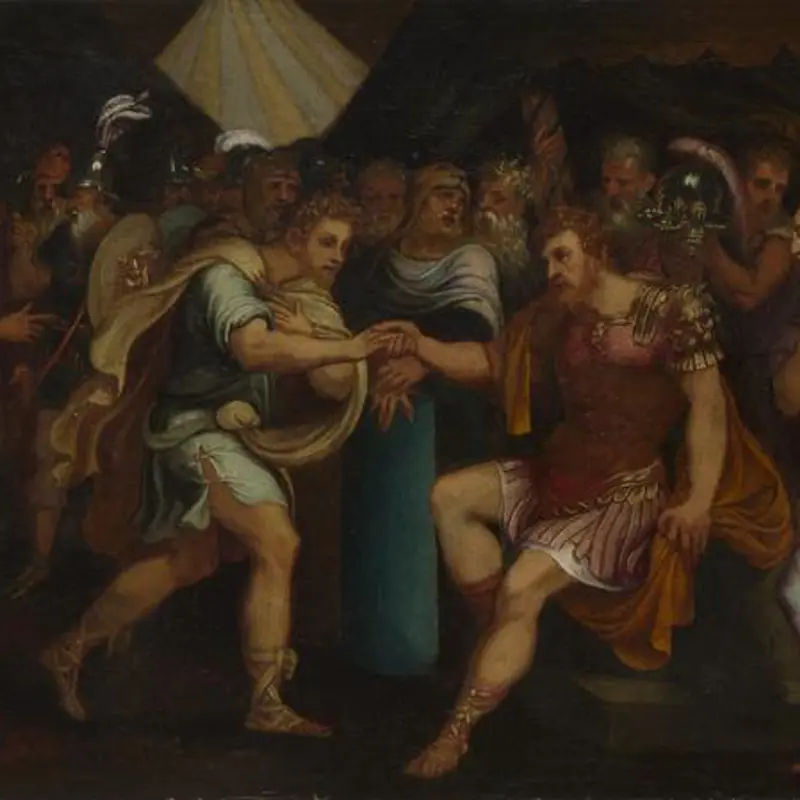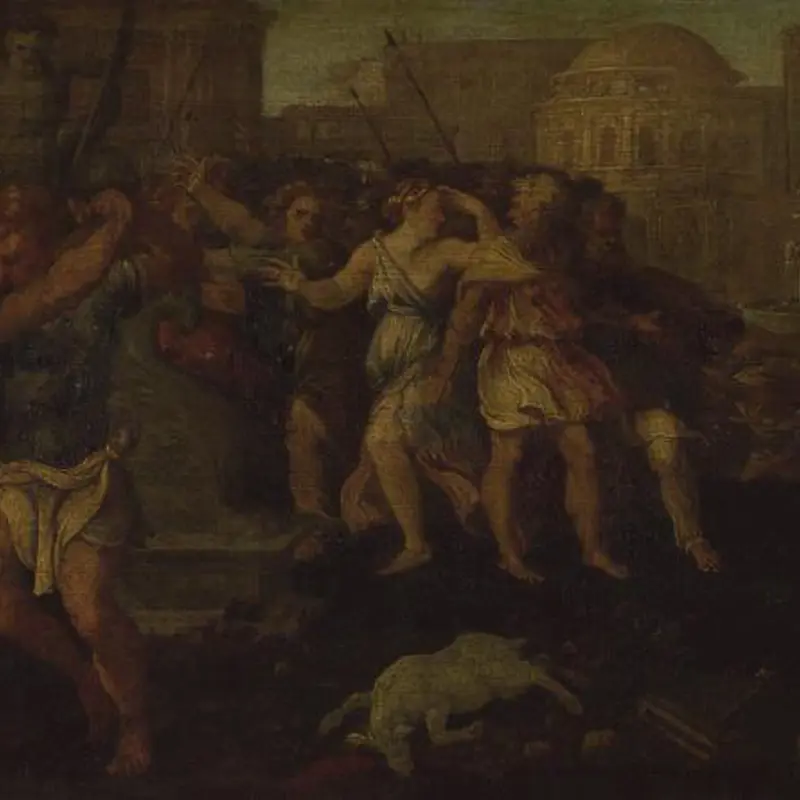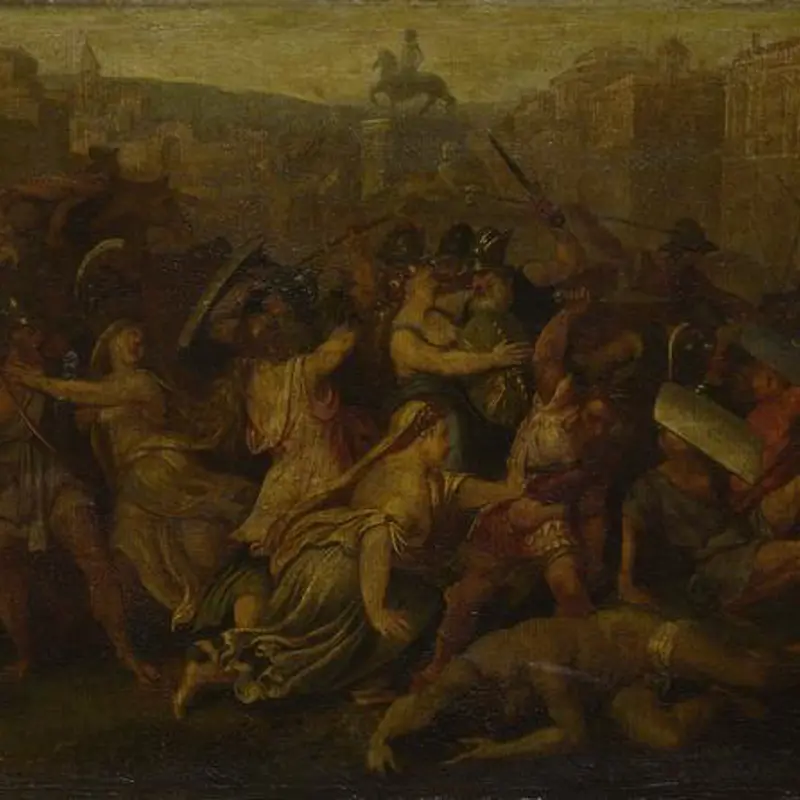Giulio Licinio, 'The Attack on Cartagena', after 1566
About the work
Overview
The Attack on Cartagena is one of a series of scenes from ancient Roman history that were probably intended to be inserted into wall panelling. Three further scenes from the series – The Continence of Scipio, The Rape of the Sabines and The Intervention of the Sabine Women – are also in the National Gallery.
The Romans assaulted the Carthaginian stronghold of New Carthage in 209 BC during the Second Punic War. The city, on the coast of north Africa, was on a peninsula connected to the mainlaind by a narrow strip of land. An unexpected storm drained the lagoon into the Mediterranean, allowing the Roman soldiers led by Scipio Africanus to approach the city from the north while the naval forces penetrated the city from the south, and the Carthaginians were forced to surrender. Here, the viewer is thrust into the centre of the action as Roman soldiers lay siege to the city.
Key facts
Details
- Full title
- The Attack on Cartagena
- Artist
- Giulio Licinio
- Artist dates
- About 1527; died after 1584
- Part of the series
- Scenes from Ancient Roman History
- Date made
- After 1566
- Medium and support
- Oil, originally on wood, transferred to canvas
- Dimensions
- 35.6 × 153 cm
- Acquisition credit
- Bought, 1860
- Inventory number
- NG643.1
- Location
- Not on display
- Collection
- Main Collection
Provenance
Additional information
Text extracted from the ‘Provenance’ section of the catalogue entry in Cecil Gould, ‘National Gallery Catalogues: The Sixteenth Century Italian Schools’, London 1987; for further information, see the full catalogue entry.
Bibliography
-
1962Gould, Cecil, National Gallery Catalogues: The Sixteenth Century Italian Schools (excluding the Venetian), London 1962
-
1987Gould, Cecil, National Gallery Catalogues: The Sixteenth Century Italian Schools, London 1987
-
2001
C. Baker and T. Henry, The National Gallery: Complete Illustrated Catalogue, London 2001
About this record
If you know more about this work or have spotted an error, please contact us. Please note that exhibition histories are listed from 2009 onwards. Bibliographies may not be complete; more comprehensive information is available in the National Gallery Library.
Images
About the series: Scenes from Ancient Roman History

Overview
These four pictures are from a series of paintings of scenes from ancient Roman history. They were made for the decoration of a room and were originally painted on panel but have since been transferred to canvas. Their size and horizontal format suggests they were probably intended to be inserted into wall panelling, as was common practice in Renaissance Venice.
The pictures in the National Gallery’s collection show: The Attack on Cartagena; The Continence of Scipio; The Rape of the Sabines; and The Intervention of the Sabine Women. Two other pictures from the same series, Coriolanus and Scipio rewarding the Soldiers, are in a private collection.




